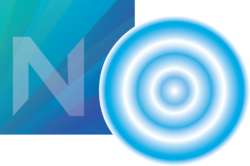 The Digital Curation program is a two-year graduate certificate, taught online, intended for professionals working in museums, archives, artist studios, government offices, and anywhere that people need to manage digital files. The program walks students through the phases of managing digitized or born-digital artifacts, including acquisition, representation, access, and preservation. Registration opens soon!
The Digital Curation program is a two-year graduate certificate, taught online, intended for professionals working in museums, archives, artist studios, government offices, and anywhere that people need to manage digital files. The program walks students through the phases of managing digitized or born-digital artifacts, including acquisition, representation, access, and preservation. Registration opens soon!
For a photo archivist, for example, these courses would answer questions like how to scan analog photos into a database, how to add metadata and create a Web site to make them searchable online, and how to cope with the rapid obsolescence of the software and hardware used to catalogue them.
Although the certificate is designed to be completed in two years, part-time students may choose to spread the 18 credits (6 courses) over a longer period. To make things easier for students currently working in collecting institutions, we have designed the final course as an internship that may take place in the student’s own workplace.
Up-to-date information about the program, including descriptions of courses and participating faculty, can be found at DigitalCuration.UMaine.edu.
The Digital Curation program has been developed by interdisciplinary team of ten faculty from across the campus, from departments as diverse as Art, Computer Science, History, New Media, and Spatial Engineering, as well as institutions such as Fogler Library, the Folklife Center, and Hudson Museum.
The first course in the sequence, DIG 500, will be taught by Special Collections librarian Richard Hollinger, Modernist art historian Justin Wolff, and Jon Ippolito, Digital Curation project director and former Associate Curator of Media Arts at the Guggenheim.
DIG 500: Introduction to Digital Curation
As the introductory course to the Digital Curation program, this class surveys the variety of digital artifacts that we consciously or unconsciously create and consume today, with a focus on how to collect and manage digitized and born-digital artifacts and their related data. Students learn technical skills such as how to digitize analog documents, photographs, and videos, as well as curatorial knowledge such as how selection criteria vary as a function of type of institution (archives v. libraries v. museums) and field (art v. archeology). The course also reviews methods for ensuring the ongoing integrity of the artifact and laws governing the acquisition and use of intellectual property, such as how copyright extends to images, editions, and future versions of a work.
Still Water Senior Researcher John Bell is slated to co-teach upper-level courses in Representation (metadata) with Desiree Butterfield-Nagy and Access (databases and virtual exhibitions) with other faculty. Meanwhile, Ippolito will team up with Hollinger again to teach preservation in DIG 550.

Pingback: Still Water blog · Digital Curation syllabi now online